Eating seasonally starts with knowing what grows when.
It can be so easy to forget about what “fresh” really means in today’s global economy. Let us help with that. Learn about all of the veggies we grow below. Find out how to best prepare them, and when to expect them.
What to expect in your CSA!
Below is a list of most of the veggies that went out in 2023's CSA. Although this year won't neccessarily be the same (due to weather, etc.), it should give you a pretty good idea of variety and quantity.
The chart shows veggies included in our Bigger bounty size. The main difference between our Bigger and Smaller sizes is that carrots and potatoes are typically delivered every week in Bigger bounties while they alternate weeks in Smaller bounties.
| Week | WK 1 | 2 | 3 | 4 | 5 | 6 | 7 | 8 | 9 | 10 | 11 | 12 | 13 | 14 |
|---|---|---|---|---|---|---|---|---|---|---|---|---|---|---|
Spinach |
||||||||||||||
Swiss Chard |
||||||||||||||
Beets |
||||||||||||||
Dill |
||||||||||||||
Kohlrabi |
||||||||||||||
Zucchini |
||||||||||||||
Kale |
||||||||||||||
Cucumber |
||||||||||||||
Fennel |
||||||||||||||
Cabbage |
||||||||||||||
Broccoli |
||||||||||||||
Cauliflower |
||||||||||||||
Beans |
||||||||||||||
Corn |
||||||||||||||
Leek |
||||||||||||||
Squash |
||||||||||||||
Brussels Sprouts |
||||||||||||||
Onion |
||||||||||||||
Carrots |
||||||||||||||
Potatoes |
- June
- July
- Aug
- Sept
- Oct
- Nov
- Dec
- Jan
- Feb
- Mar
Spinach
Carrots
Zucchini
Beets
Dill
Fennel
Potatoes
Broccoli
Cauliflower
Onions
Cucumbers
Squash
Kohlrabi
Cabbage
Kale
Brussels Sprouts
Peas
Beans
Pumpkin
Sweet Corn
U-Pick Saskatoons *
All timelines may vary due to weather. The above listed crops are our regular veggie offerings. We try new crops each season which may or may not be available for purchase at our market stalls or included in the CSA depending on their success and volume.
**Berries from our U-Pick saskatoon orchard are not sold at Farmers' Markets or included in the CSA.
MARKET ONLY crops will be available on our Farmers' Market tables but not included in the CSA. These crops either reach their peak too early in the season (pre-CSA) or do not produce enough volume to be fairly distributed in each of the weekly CSA bounties. If weather conditions give us bumper crops or longer seasons for these veggies, there is always a chance you'll find them included but they should not be expected to make an appearance.
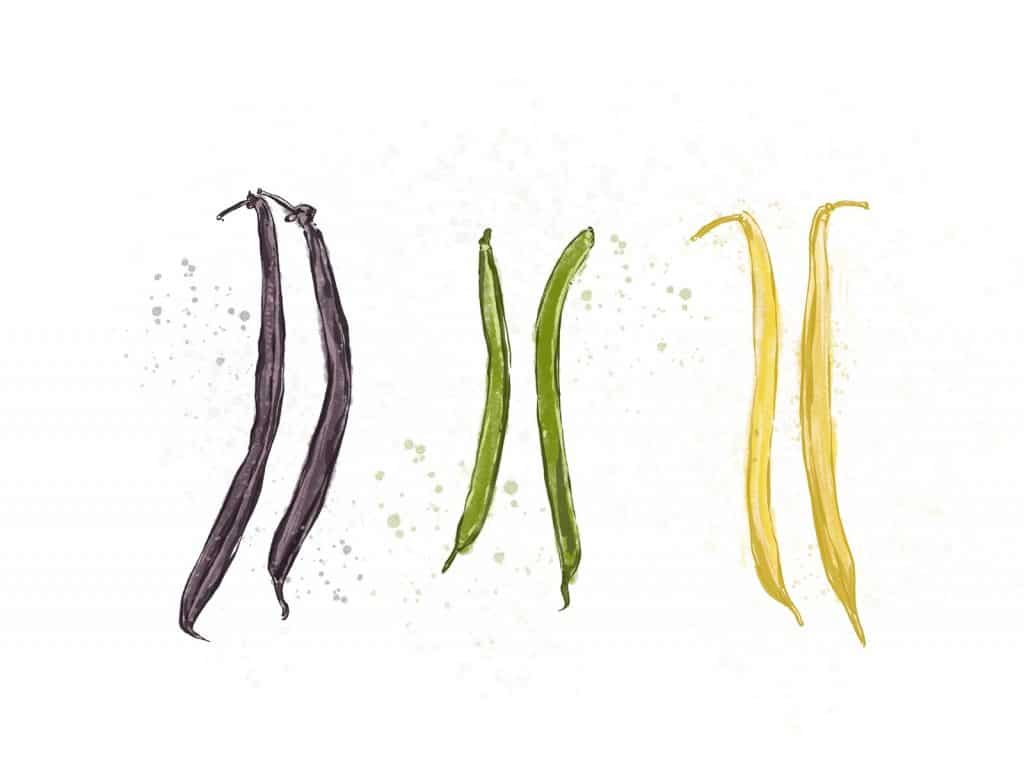
Beans
Legume
Beans
Legume

Storage Recommendations & Recipes:
Beans should be put into a fridge crisper as quickly as you can and make sure it’s low moisture. If beans get too wet, they can mould quickly.
Check out some of the bean recipes we’ve curated for you!
Varieties
Green:
A perfectly well rounded green bean.
Yellow:
A beautiful waxy bean with a bright flavour and crisp texture.
Purple:
Crisp and hearty, they turn green when cooked.
Dragon Tongue:
A wide yellow bean streaked with purple, these unique beauties are juicy and full flavoured. Cook them if you like, but we like them raw!
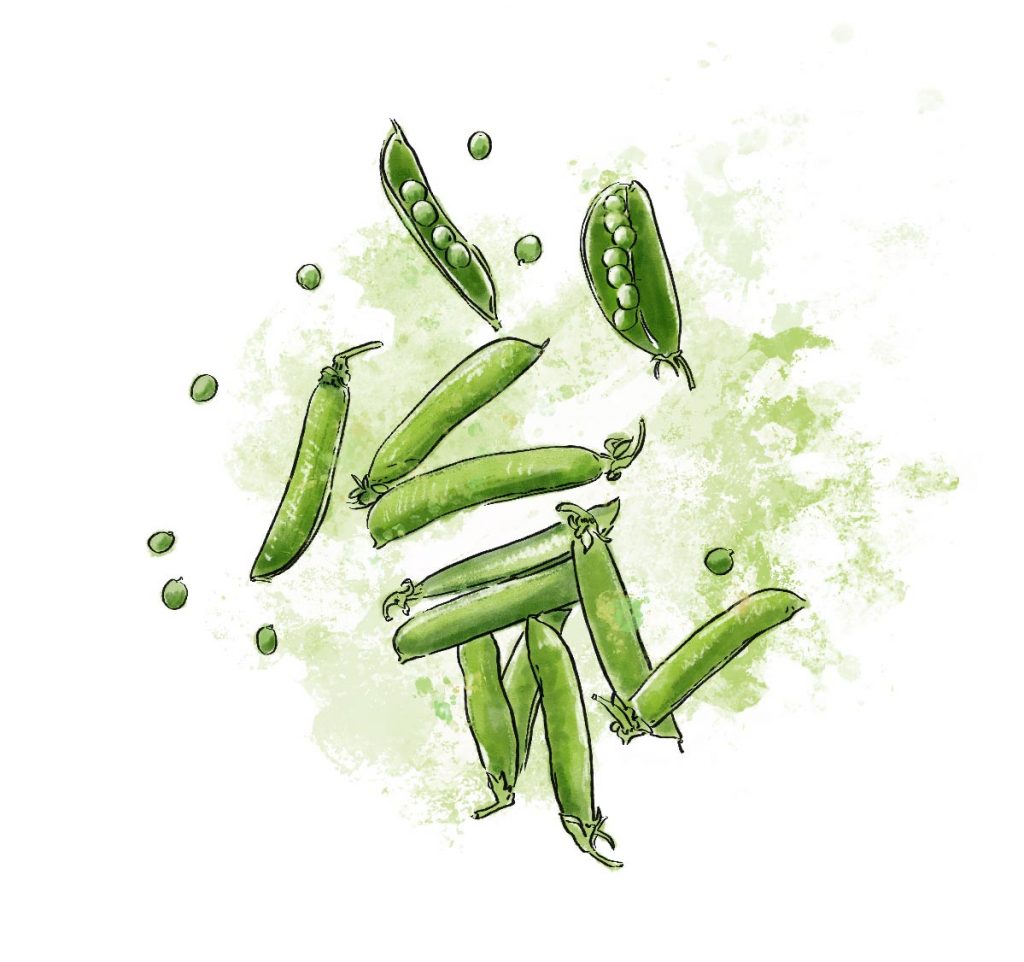
Peas
Legume
Peas
Legume

Storage Recommendations & Recipes:
Get your peas into the fridge ASAP with low moisture. If they get too wet, they will mould quickly.
Peas are at their sweetest when fresh. From the day the pea leaves the vine, it begins turning sugars into starch. So eat your peas soon after purchasing for the best pea flavour!
Check out some pea recipe ideas we’ve curated for you.
Varieties
Shelling:
Sweet round peas just waiting for you pop open the pod
Snap:
No shelling required for these. The whole pea, pod and all is juicy and tender.
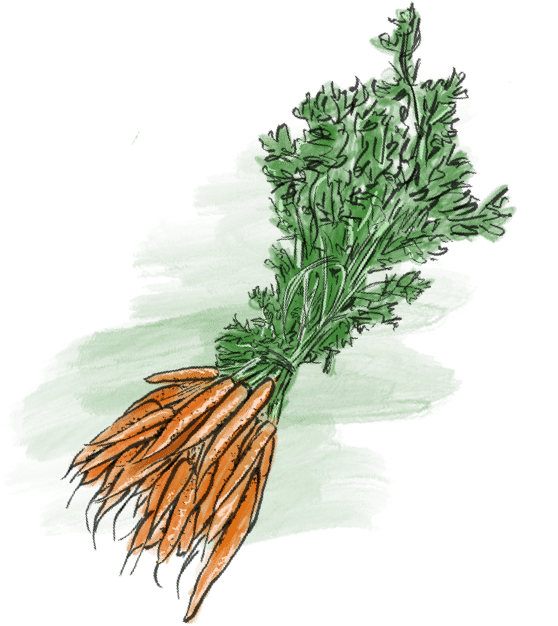
Carrots
Umbelliferae
Carrots
Umbelliferae

Storage Recommendations & Recipes:
Carrots aren’t fussy, keep them in a fridge crisper with medium moisture.
Early in the year, we sell them in bunches with the tops on, then we switch to topless carrots in a vented bag (scandalous!) for the rest of the season when the carrot tops are not longer at their best. When bunched, they do best when you keep the tops on until you use them!
Check out some carrot recipes we’ve curated for you!
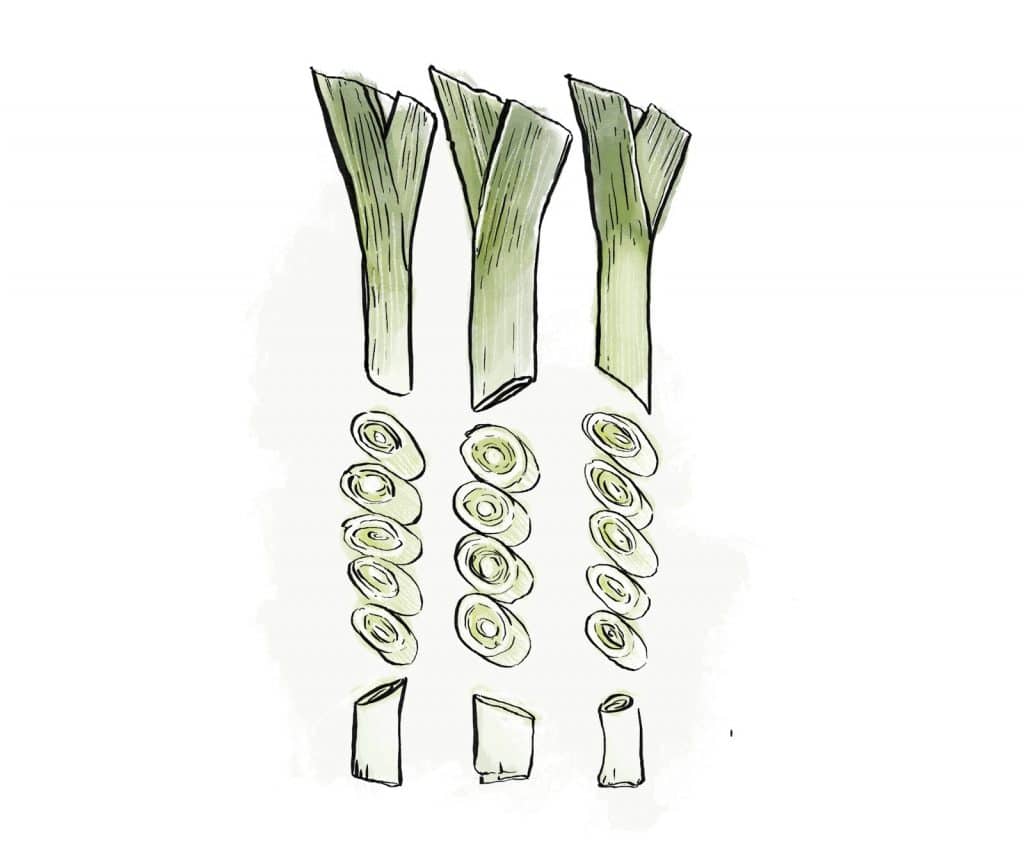
Leek
Alliaceae
Leek
Alliaceae

Storage Recommendations & Recipes:
Fridge crisper, low moisture.
Here are some great leek recipes we’ve curated for you.
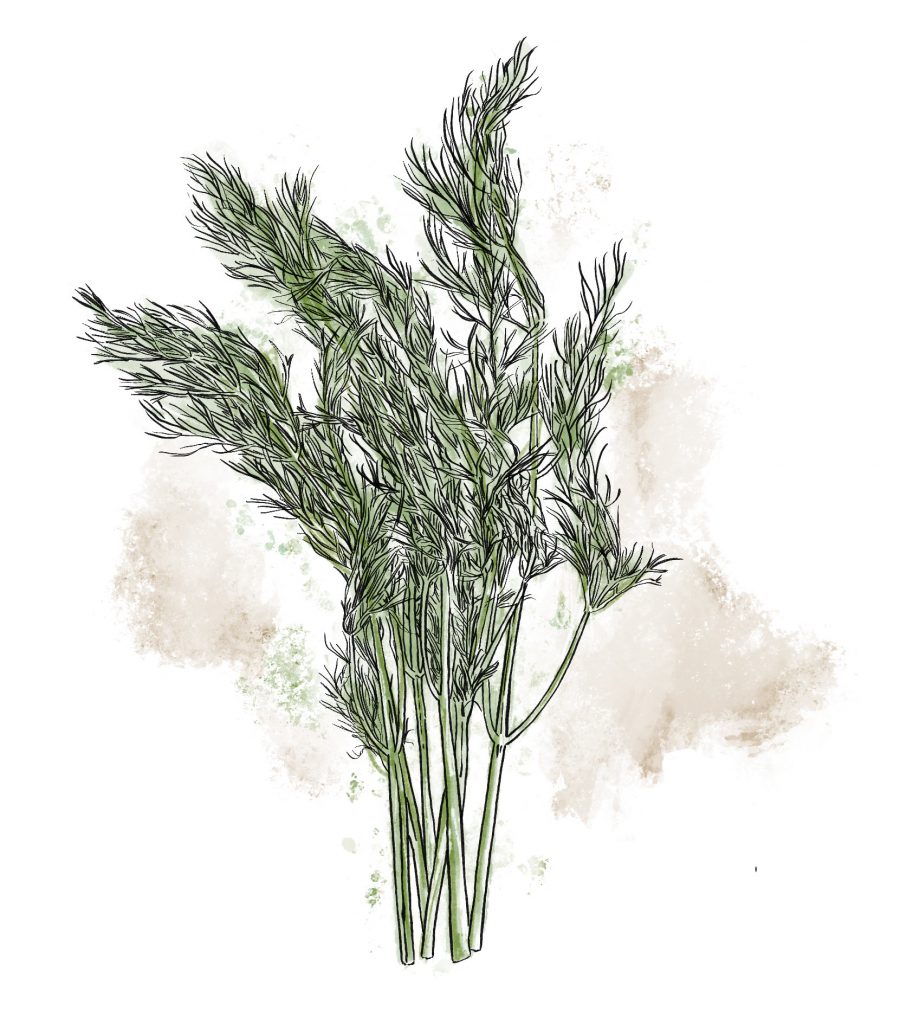
Dill
Umbelliferae
Dill
Umbelliferae

Storage Recommendations & Recipes:
Keep it in the fridge and don’t let it get too dry. Unless you’re intending to dry it for usage later, then yeah, let it dry.
Dill also freezes really well! Throw a bunch of fresh dill in the freezer for fresh flavour later.
Not sure what else to do with dill? Check out some of the dill recipes we’ve curated for you!

Fennel
Umbelliferae
Fennel
Umbelliferae

Storage Recommendations & Recipes:
Always keep fennel in the fridge or it will decline quickly.
Not sure how to cook up this veggie? Check out our curated collection of fennel recipes to inspire your tastebuds.

Corn
Poaceae
Corn
Poaceae

Storage Recommendations & Recipes:
Keep it in the fridge and eat it quickly. Every day that it’s off the stalk, the corn is turning sugars to starches. So don’t shuck it until you’re ready to eat it, and cook it lightly (overcooking makes for tough corn)!
Take a look at some of the corn recipe ideas we’ve curated for you.
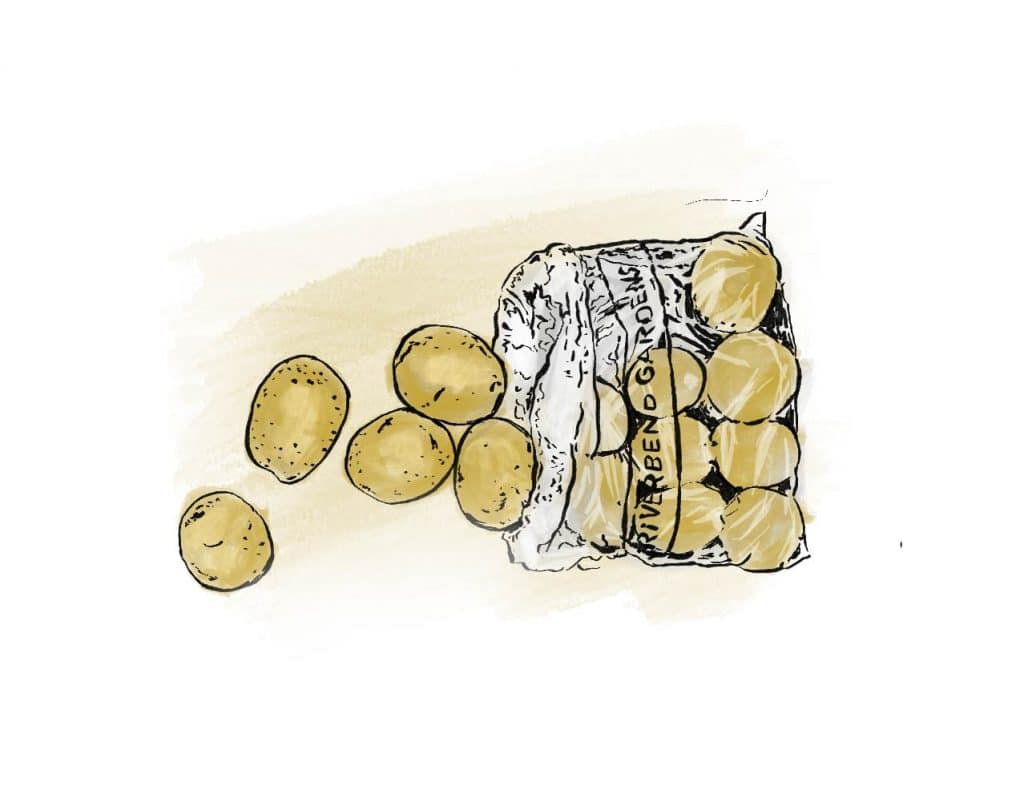
Potatoes
Solanaceae
Potatoes
Solanaceae

Storage Recommendations & Recipes:
New potatoes (the skinless, first crop of the season) should be kept cool ASAP as they can go soft within hours if kept in a warm, sunny vehicle or room. All our potatoes should always be kept in a fridge crisper, medium moisture.
Need some ideas on how to make your potatoes really shine? Check out this collection of recipes we’ve curated for you to make potatoes the highlight of your table.
Varieties
Columba:
Our earliest potato, Columba is a round to oval shaped, yellow fleshed potato variety that is an excellent multi-purpose kitchen staple. It can be distinguished from other varieties by its exceptional taste and texture, appealing to the broadest range of consumers.
Mozart:
With their beautiful rose coloured skin and bright yellow/white flesh, mozart is ideal for mashed (or smashed) potatoes and potato wedges.
Cellandine:
Beautiful white flesh, crisp and firm when cooking, we love these juicy potatoes best when they’re steamed or roasted.
Cecile:
A standard in our potato roster for years, these red skin, yellow flesh fingerlings are generally touted to have the best flavour of any potato variety! Yep. We said it. We eat them boiled or roasted most often and they truly are a potato that sets the bar high.
Violet Queen:
These gorgeous purple potatoes are a favourite on our customers tables. Violet Queen Potatoes are colourful, tasty and different and are best roasted or grilled.
Bellanita:
Our most popular "banana" potatoes, Bellanitas are an early variety that will stay firm when cooked.
Satina:
Satiny yellow skin and yellow flesh with a smooth texture and great flavour. Ideal for boiling and mashing.
Norkotah:
A Russet-skinned potato, perfect for mashing, baking, or boiling!
Double Fun:
Double coloured, this potato has purple flesh with yellow highlights. High in antioxidents and a great all purpose potato
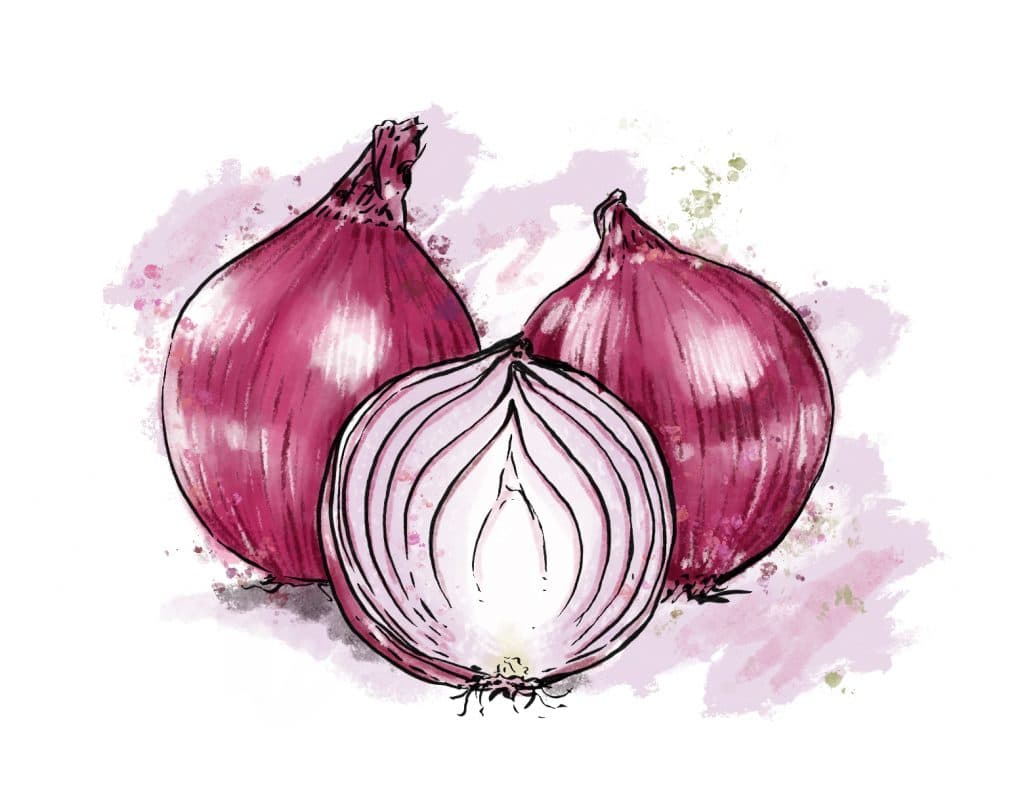
Onion
Alliaceae
Onion
Alliaceae

Storage Recommendations & Recipes:
Storage recommendations depend on when you’re receiving your onions. If you have fresh onions (Sept/Oct) these bulbs don’t have the papery outer layer. You’ll want to keep these in the fridge crisper.
If you have cured onions (with a papery outer later) then keep those papery layers on for protection and store them in a cool, dry place with great ventilation. A cupboard, cellar, basement or garage are all great options. Just make sure they’re DRY!
Check out some of the great onion recipes we’ve curated for you!
Varieties
Sweet Spanish Onion:
Large, globe-shaped yellow-skinned onion with a crisp, firm white flesh that keeps well
Sweet Red Onion:
Mild flavour that is not overpowering or pungent, making them highly versatile

Radish
Brassica
Radish
Brassica

Storage Recommendations & Recipes:
Keep them in your fridge crisper with moderate moisture so they don’t dry out.
Don’t know what to do with radish? Check out these great radish recipes we’ve curated for you.
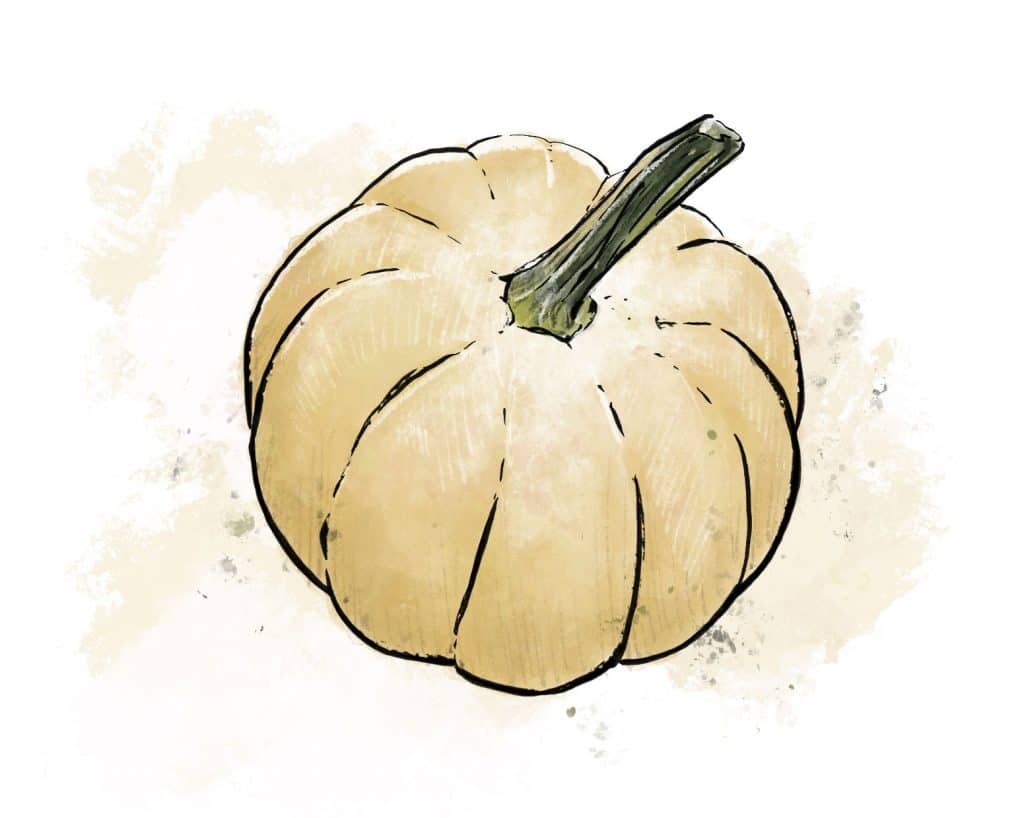
Squash
Cucurbitaceae
Squash
Cucurbitaceae

Storage Recommendations & Recipes:
Fridge is best, though squash can store at a cool room temperature too.
Not inspired by squash? Check out this list of squash recipes we’ve curated for you.
Varieties
Acorn:
A crowd pleaser because it’s so deliciously sweet and nutty, we grow three different kinds of acorn squash (green, white and “celebration” speckled green white and orange).
Hubbard:
Sweet potato meets pumpkin, a Hubbard squash is perfect for pies and soup. It has a drier texture so it’s best mashed or pureed.
Spaghetti:
Never tried a spaghetti squash? You’re in for a treat. Steam it, roast it, shred it into “spaghetti” this squash will do just about anything you want it to.
Butternut:
Butternut takes a long time to mature and so we always feel lucky when we get a harvest of these beauties. Smooth and pear-shaped, its intensely sweet flavour and creamy texture make it the holy grail of autumn flavour.
Delicata:
Also known as sweet potato squash, these small, cream coloured squash taste very much like a sweet potato.
Sweet Dumpling:
Small and yellow these squash are known for their starchy and sweet flesh.
Banana Squash:
These squash can look pink, orange or blue but inside they’ve all got rich, earthy orange flesh.
Kabocha:
Don’t be intimidated by these squat, round squash. They can be all kinds of colours but their yellowy flesh will also be sweet and creamy.
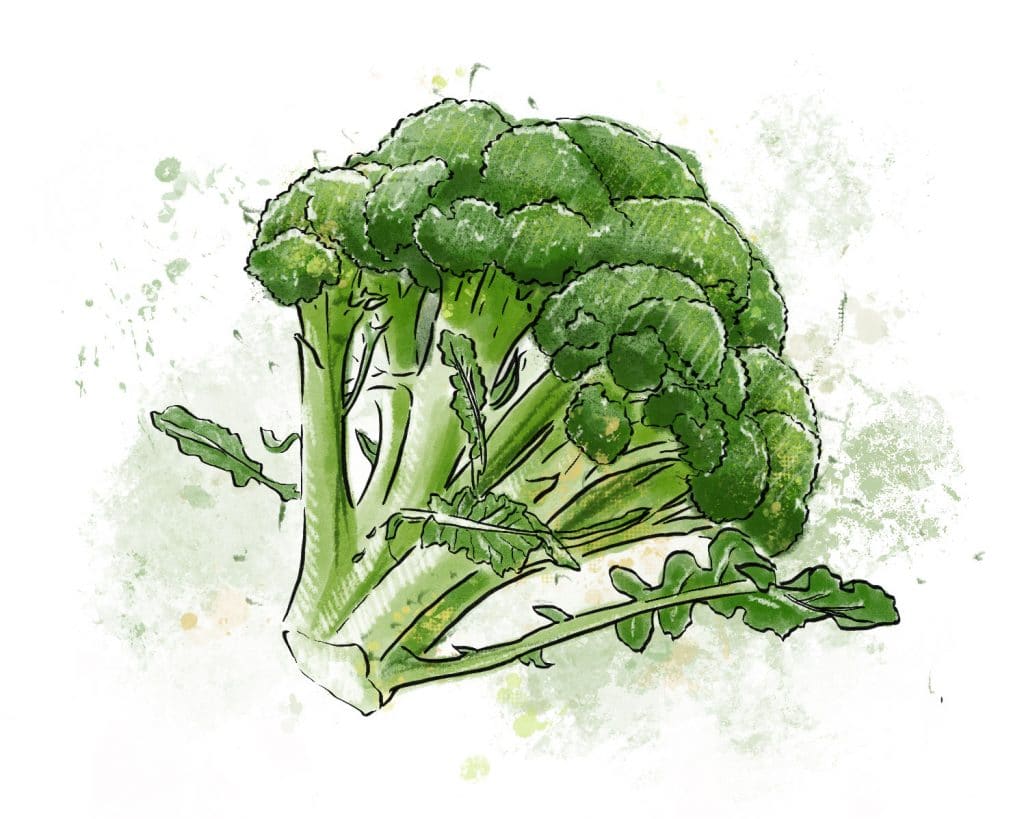
Broccoli
Brassica
Broccoli
Brassica

Storage Recommendations & Recipes:
Best kept in a fridge crisper with low moisture.
Here are some delicious recipe ideas to use when cooking broccoli.
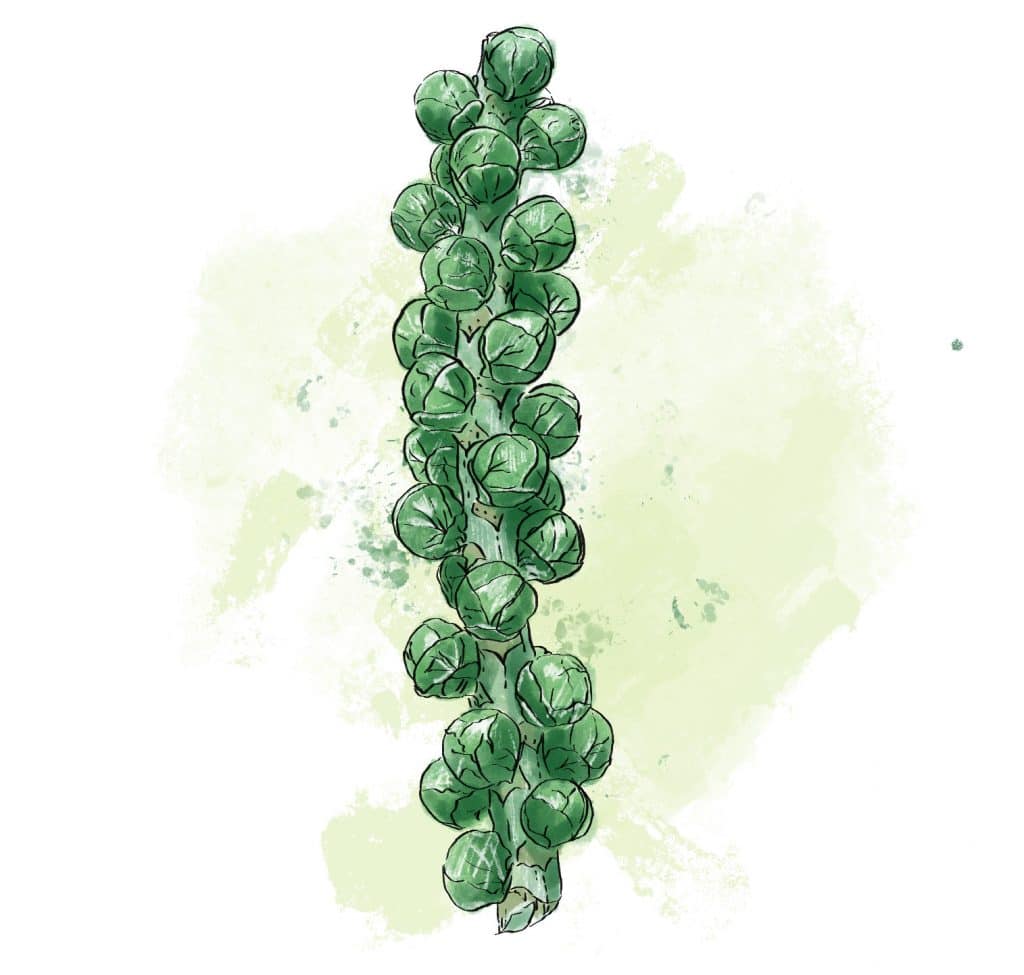
Brussels Sprouts
Brassica
Brussels Sprouts
Brassica

Storage Recommendations & Recipes:
For long lasting storage and best taste, keep them on the stalk until use and in the fridge.
Whether you’re a fan of Brussels sprouts or not, we think you’ll find something in this collection of recipe ideas we’ve curated for you that will make you love these babies.
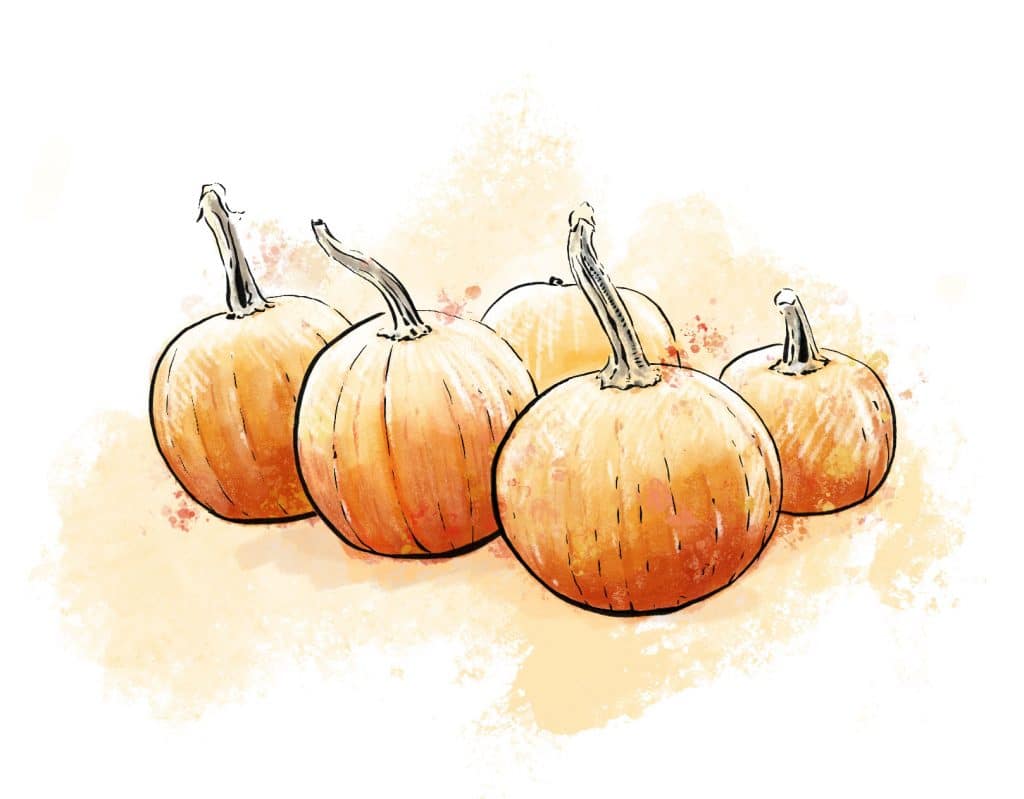
Pumpkin
Cucurbitaceae
Pumpkin
Cucurbitaceae

Storage Recommendations & Recipes:
Keep your pumpkins wherever you’d like, but don’t let them freeze and be gentle. Believe it or not, a bruise on a pumpkin can turn it into a rotten mess.
Here’s some recipe ideas we’ve curated for you to help you make the most of your pumpkin.
Varieties
Multiple:
We play with pumpkin varieties. Sometimes we grow giants, sometimes jack o lanterns, sometimes bumpy, lumpy ones, but always sugar pumpkins to make silky pumpkin pie, muffins, cookies, etc.

Kale
Brassica
Kale
Brassica

Storage Recommendations & Recipes:
Keep it in the fridge where it’s not too dry and it’ll love you forever.
Kale may not be everyone’s favourite veggie but we think you’ll find something that will catch your eye in this collection of kale recipes we’ve curated for you.
Varieties
Green:
Leafy, hearty and earthy in flavour!
Purple:
Still that same great kale texture but a little sweeter and delicate flavour than green kale.
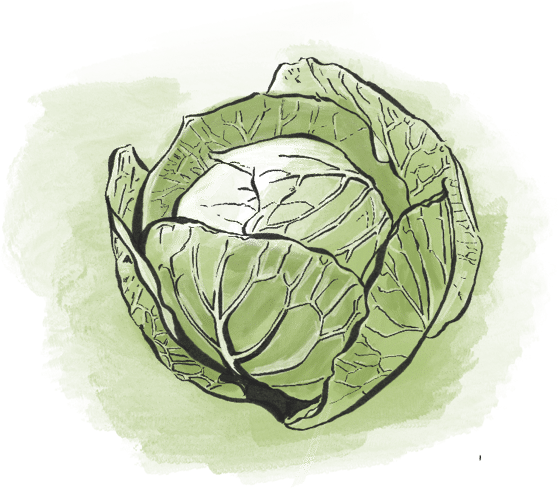
Cabbage
Brassica
Cabbage
Brassica

Storage Recommendations & Recipes:
Cabbage has a long life, made even longer by cool, dark, dry storage. Keep in your fridge for best texture and flavour.
It’s a veggie that keeps giving and giving. Check out this collection of cabbage recipes that will make the most of your head.
Varieties
Green:
Crisp, tight heads of green that are your classic, traditional cabbage.
Red:
Deep red/purple in colour, this will brighten any dish.
Spikey:
Extra sweet, these pointed cabbage are perfect for grilling, slaws and often used for kimchi.
Flat:
Heads that grow into giants, these flat cabbage live up to their name and their wide, large leaves are perfect for cabbage rolls.
Savouy:
Savoy's textured, wavy leaves give it a distinctive and delicate look. This cabbage is very tender and best suited to sautéing.
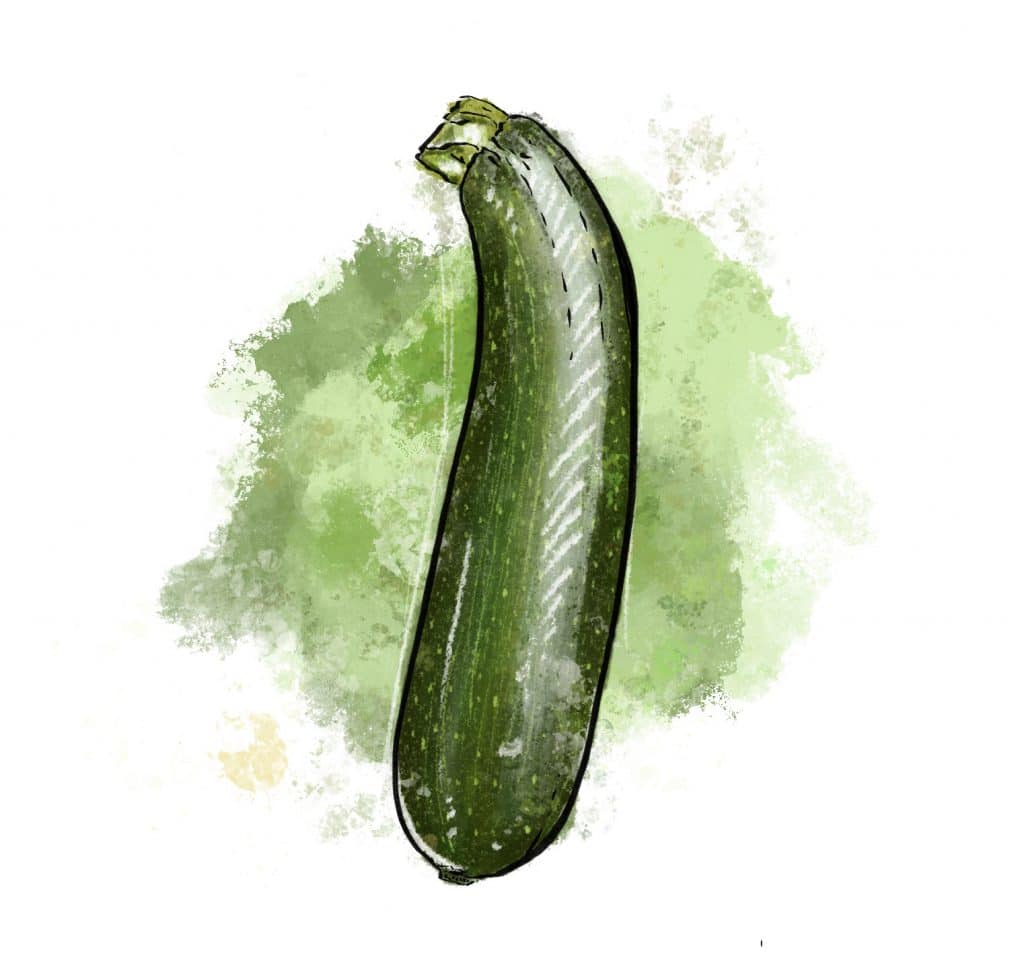
Zucchini
Cucurbitaceae
Zucchini
Cucurbitaceae

Storage Recommendations & Recipes:
While it’s not a picky veggie, it’ll do best if you keep it in the fridge until you’re ready for it.
Here’s some great ways to use zucchini that we’ve curated for you!
Varieties
Yellow & Green:
Identical in flavour, we grow both yellow and green zucchini.
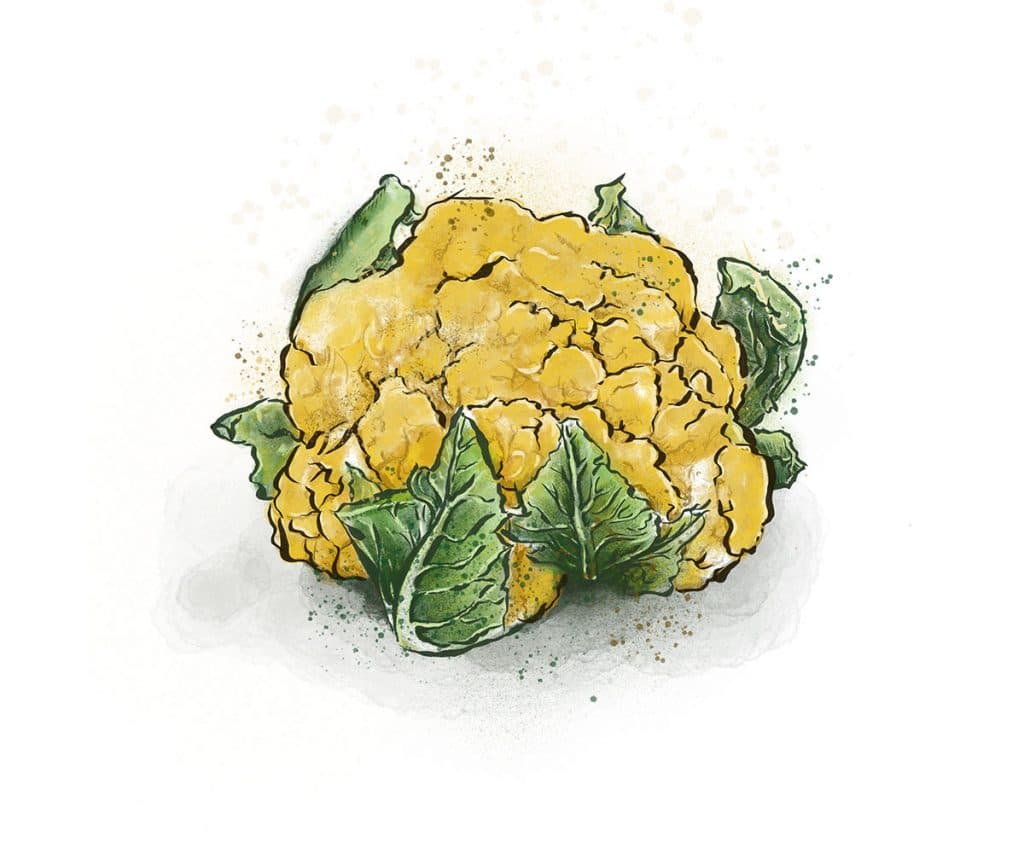
Cauliflower
Brassica
Cauliflower
Brassica

Storage Recommendations & Recipes:
Though it feels like it’s a rough and tumble veggie, cauliflower are sensitive and can bruise and wilt easily. Keep them in the fridge with a moderate amount of moisture.
There are so many ways to use cauliflower! Check out this collection of recipes we’ve curated for you.
Varieties
White:
Flavourful, bright, grown and harvested within city limits, you’ve never had a better cauliflower.
Orange:
Discovered growing wild in the Brandford Marsh (north of Toronto) in 1970, this variety has been perfected over the past 45 years into the beautiful, full headed veggie you see on our market tables today.
Green:
These green heads will give any dish a colour lift.
Purple:
This beauty keeps it colour when roasted, baked or grilled making it the perfect accent to your dinner party.
Romanesco:
Our most unique cauliflower, this spikey green beauty has a flavour that is much smoother and nuttier than other cauli. What’s even more interesting is that the number of spirals on any given Romanesco is a Fibonacci sequence number!

Cucumbers
Cucurbitaceae
Cucumbers
Cucurbitaceae

Storage Recommendations & Recipes:
Even an hour in a warm/hot car will make these delicate veggies sweat, so get them home and into the fridge ASAP and keep them dry. Most importantly eat them soon. Field cucumbers are best eaten as close to picking as possible.
Our cucumbers are NOT the long English kind. They’re field cucumbers which are bumpy and delicious fresh or pickled. Here are some great recipes we’ve curated for you where they’ll really shine.
Varieties
FIELD cukes:
These are NOT your long English type, they’re spiky and blunt and perfect for pickling.

Kohlrabi
Brassica
Kohlrabi
Brassica

Storage Recommendations & Recipes:
Keep it in the fridge until you peel it and dig into it’s beautiful bright centre.
What’s the best way to use this unusual veggie? Check out some recipe ideas we’ve curated here.
Varieties
Green:
Bright, juicy and crisp. It has a light flavour and is just an all around happy veggie.
Purple:
Identical in flavour to green kohlrabi
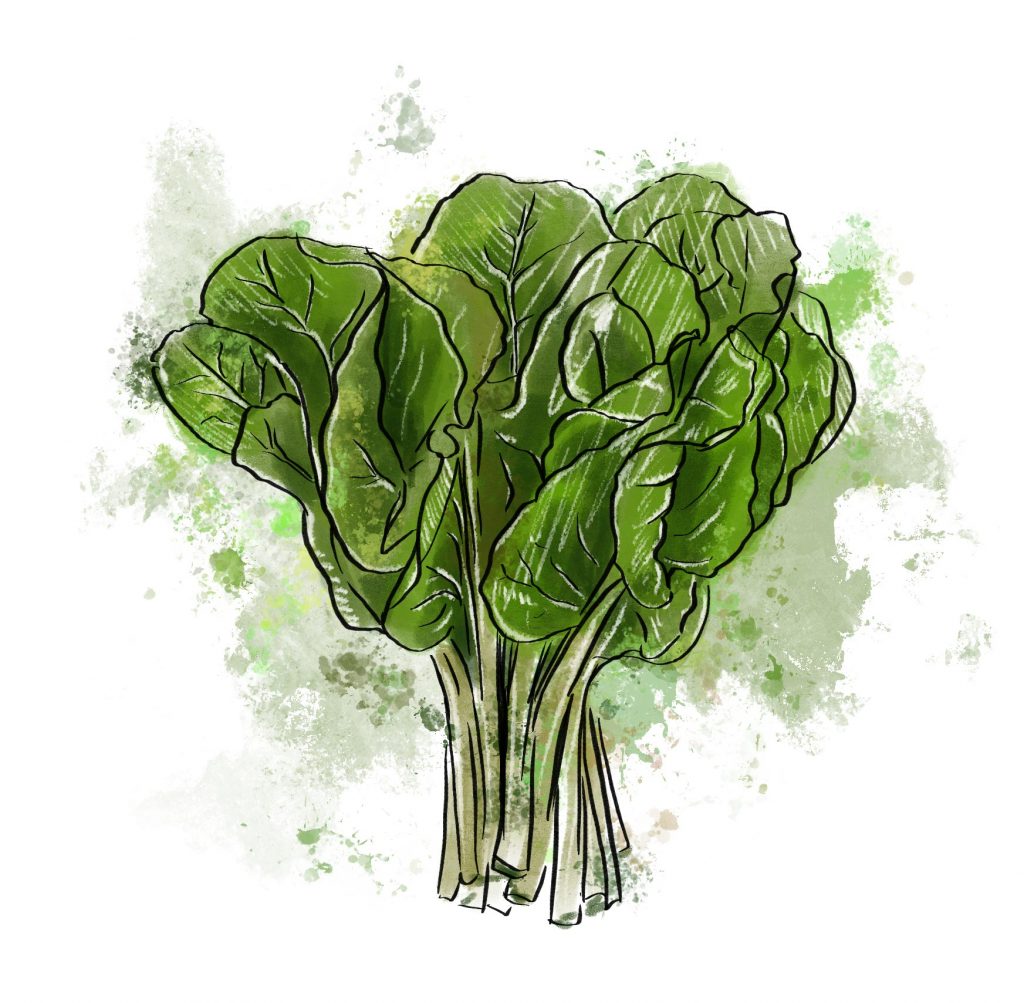
Spinach
Amaranthaceae
Spinach
Amaranthaceae

Storage Recommendations & Recipes:
Keep spinach in the fridge and keep them dry.
Check out these great spinach recipes we’ve curated for you.
Varieties
Variety:
The variety we grow makes big, healthy plants whose leaves are still full of sweet flavour even when they’re as big as your face.
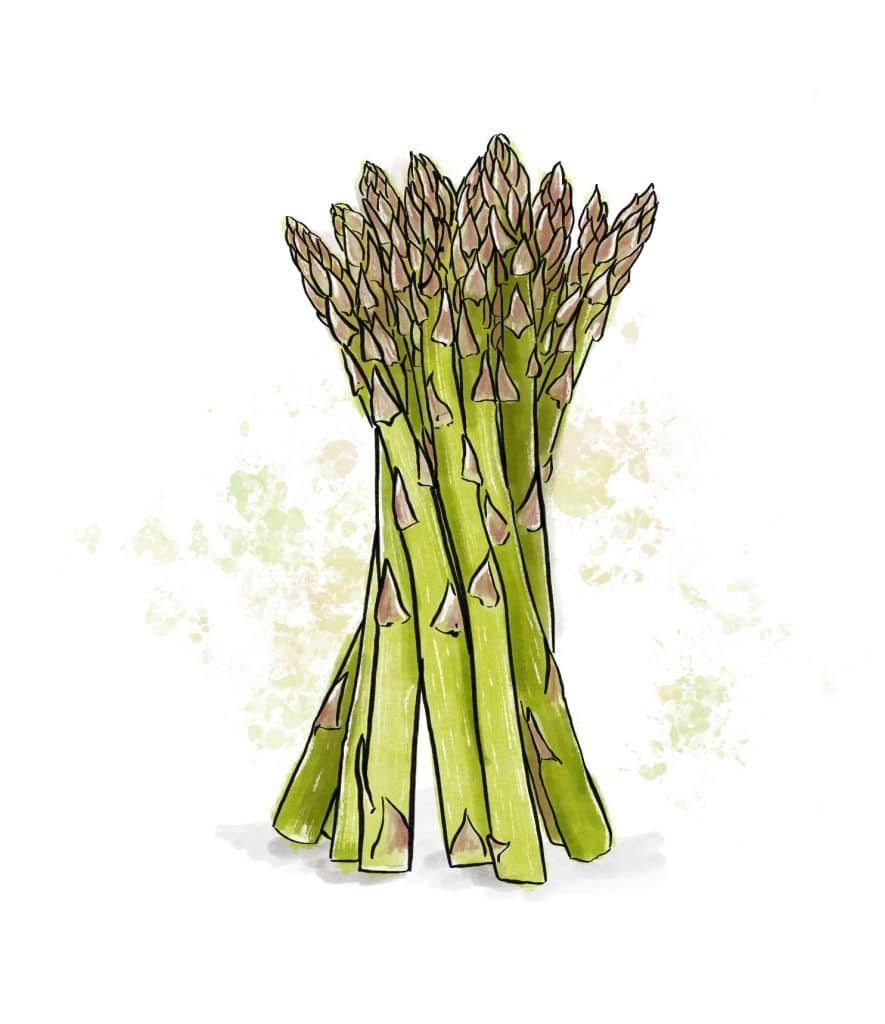
Asparagus
Amaranthaceae
Asparagus
Amaranthaceae

Storage Recommendations & Recipes:
Keep it in a fridge crisper with high moisture or even in a cup of water like flowers.
Asparagus are the first, tasty bite of summer. Check out all the different ways to use them in this collection of recipes we’ve curated for you.

Swiss Chard
Amaranthaceae
Swiss Chard
Amaranthaceae

Storage Recommendations & Recipes:
Keep them in the fridge and eat them soon after purchasing, theirs is the kind of beauty that is fleeting.
Need a little inspiration for using up your Swiss chard? Check out these chard recipes we’ve curated for you.
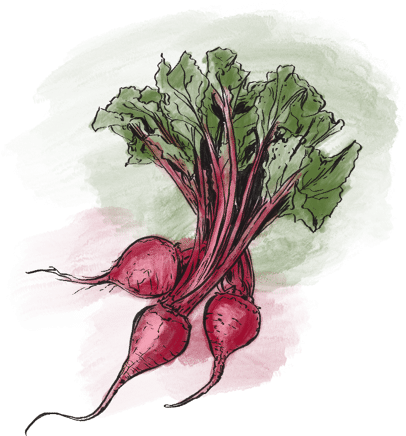
Beets
Amaranthaceae
Beets
Amaranthaceae

Storage Recommendations & Recipes:
Beets store very well. They’re not fussy, they’re not fragile, they just need a little crisper space with low moisture and you can keep coming back to them again and again!
Beets are one of the most versatile veggies we grow. To inspire you to try something delicious and different with them, we’ve curated this collection of beet recipes for you to enjoy.
Varieties
Red:
Cylinder and round red beets taste almost identical, but never disappoint.
Golden:
If you haven’t tried a golden beet, you have a world of flavour ahead of you. Sweet and bright, these beets will upend everything you think you know about earthy, heavy beets.
Chioggia (Candy Cane):
Named after an Italian town, this beet is lighter in flavour and gorgeous in design.